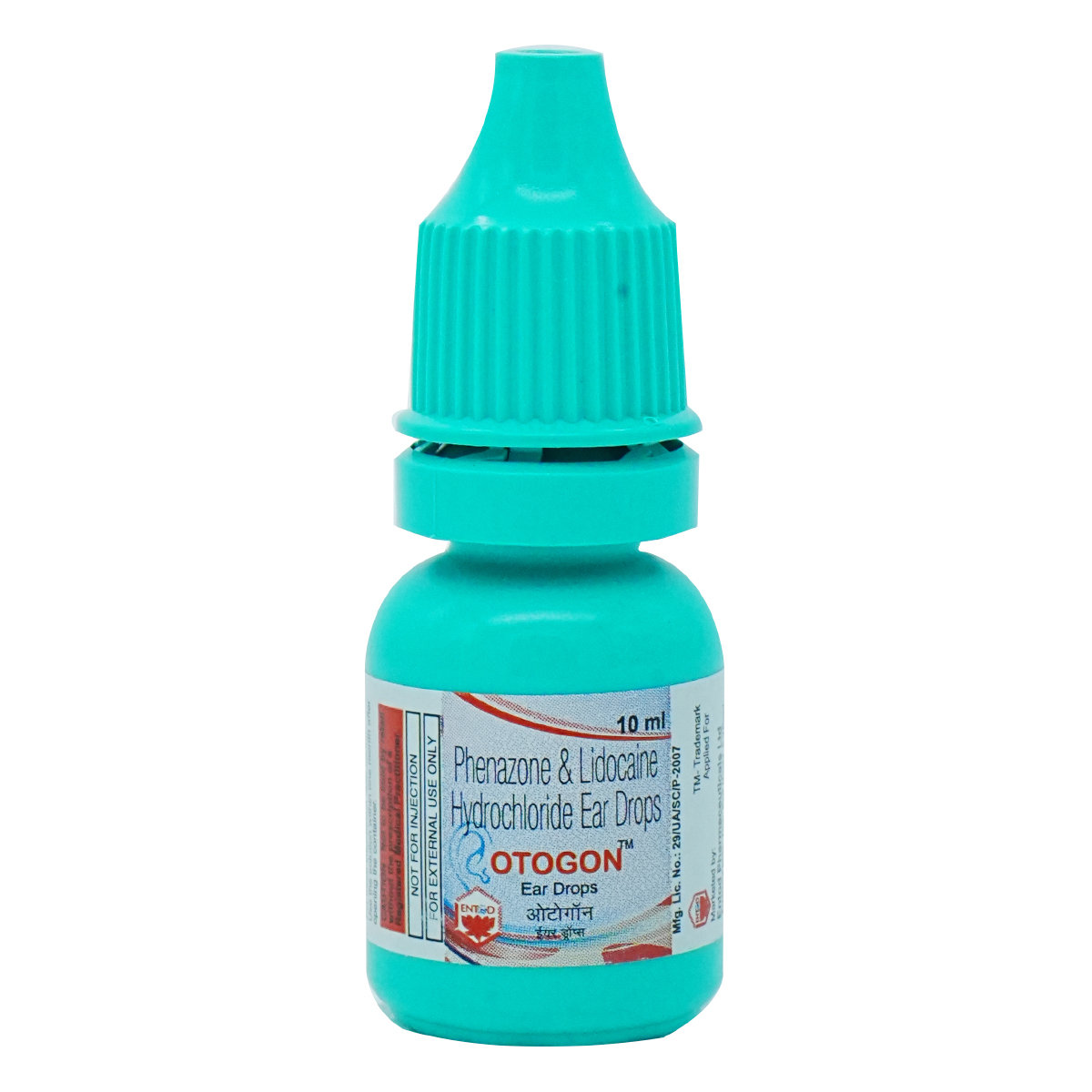Lidozone Ear Drops
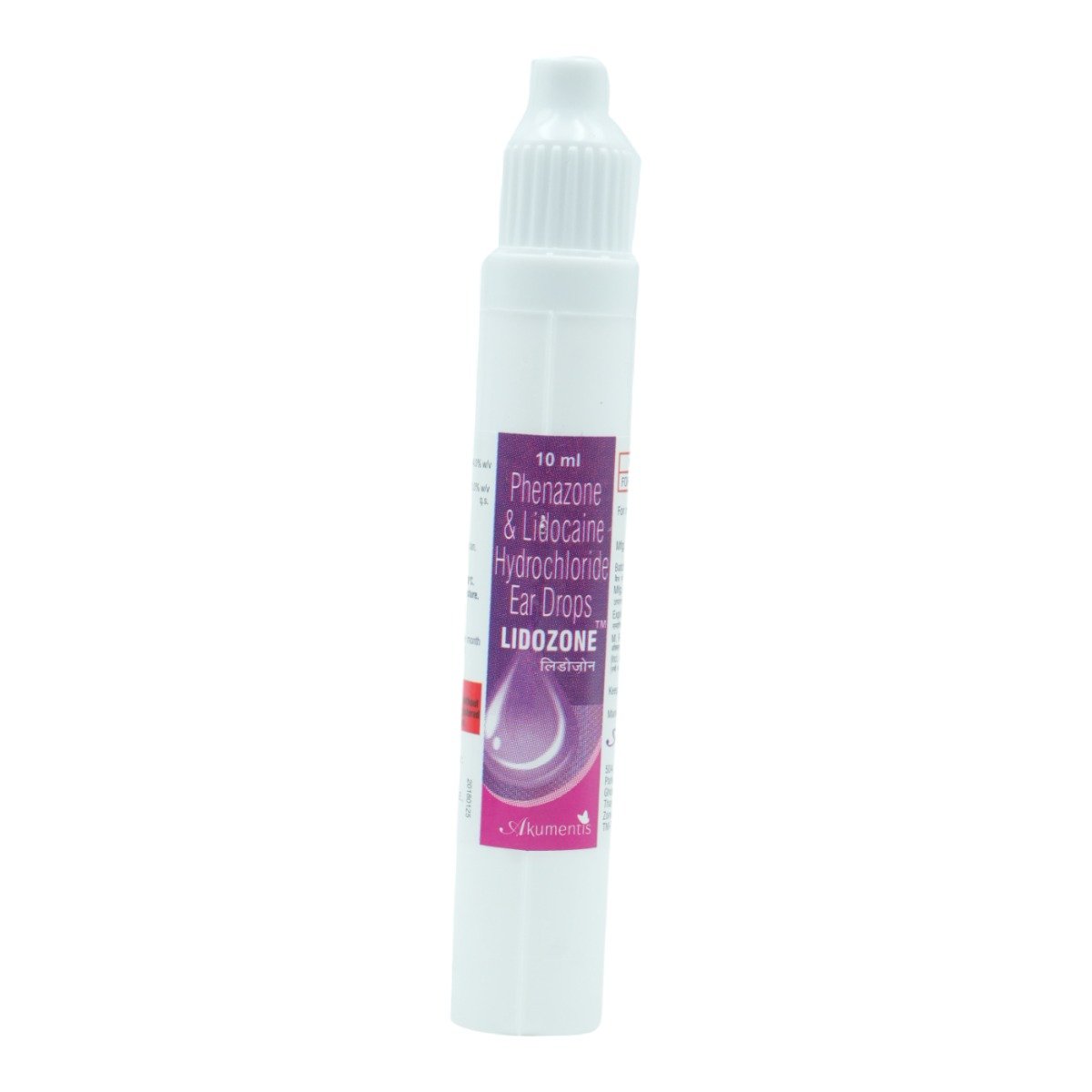
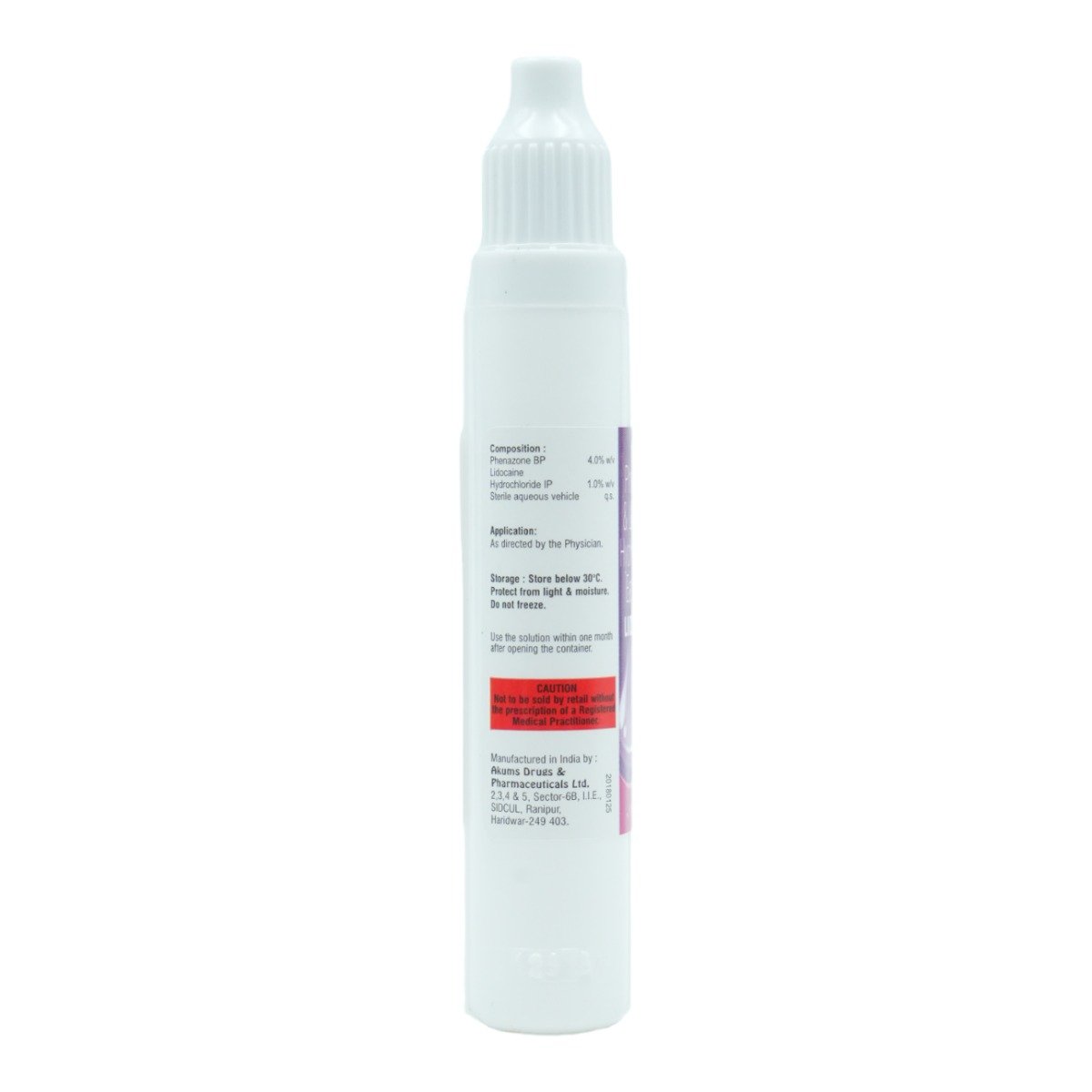
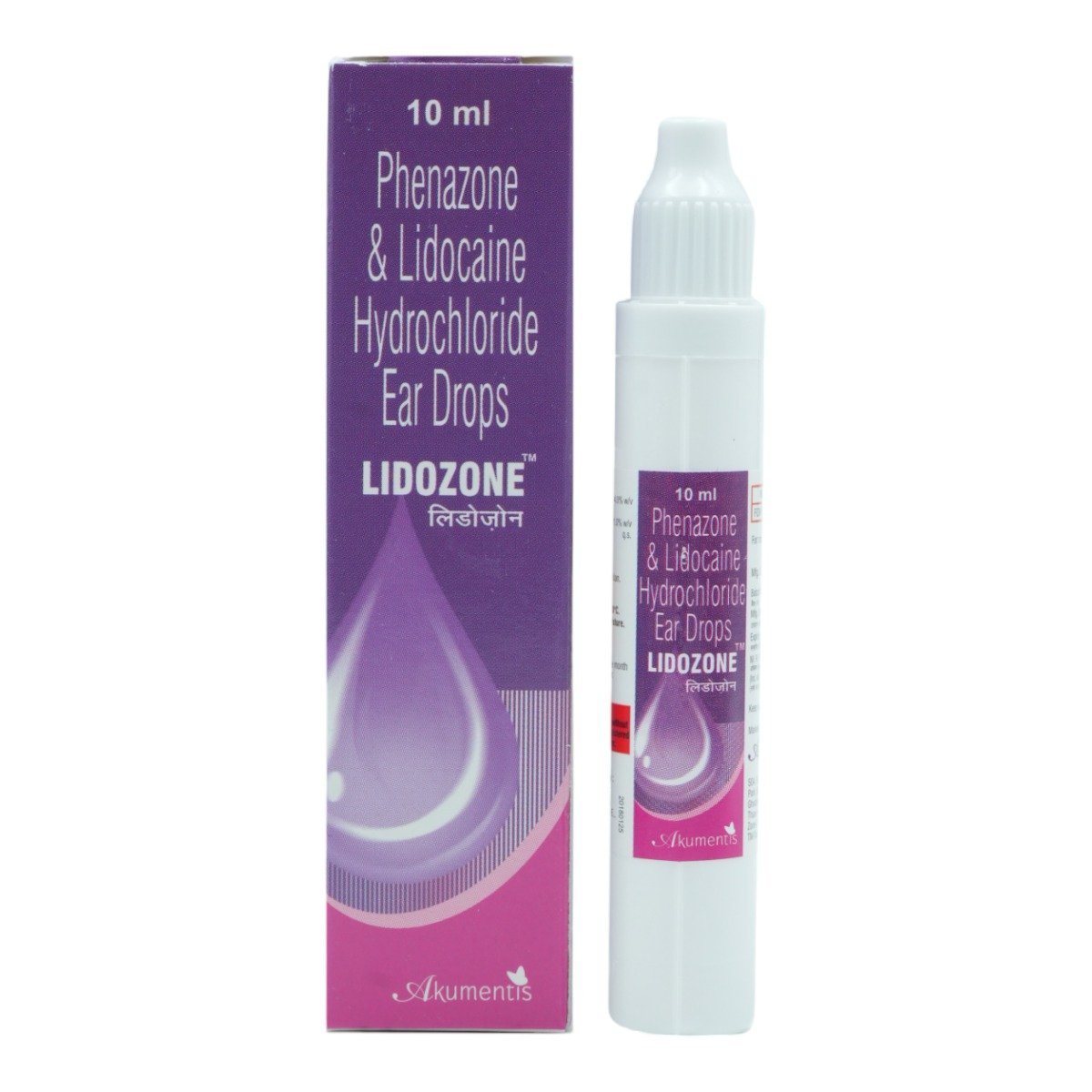
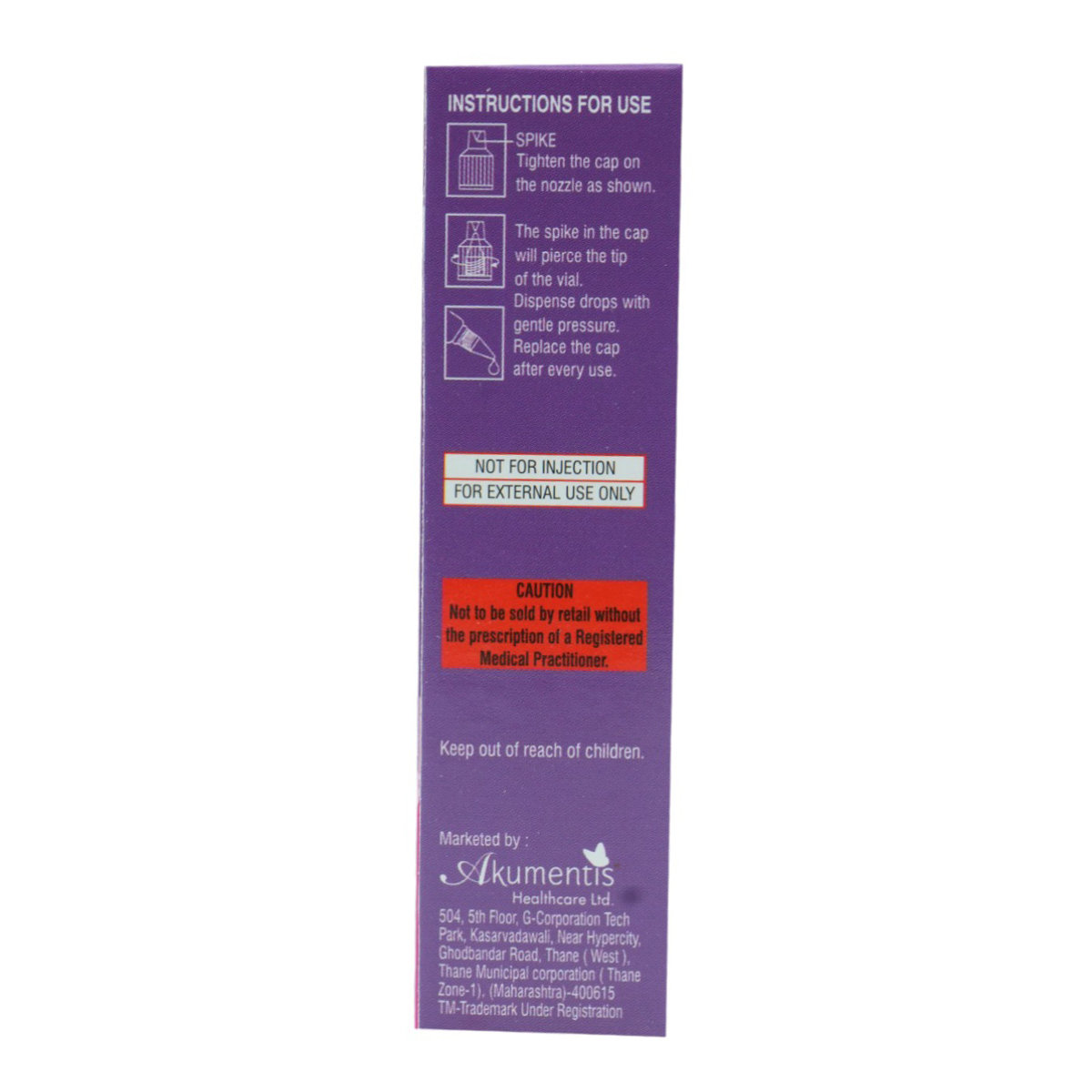
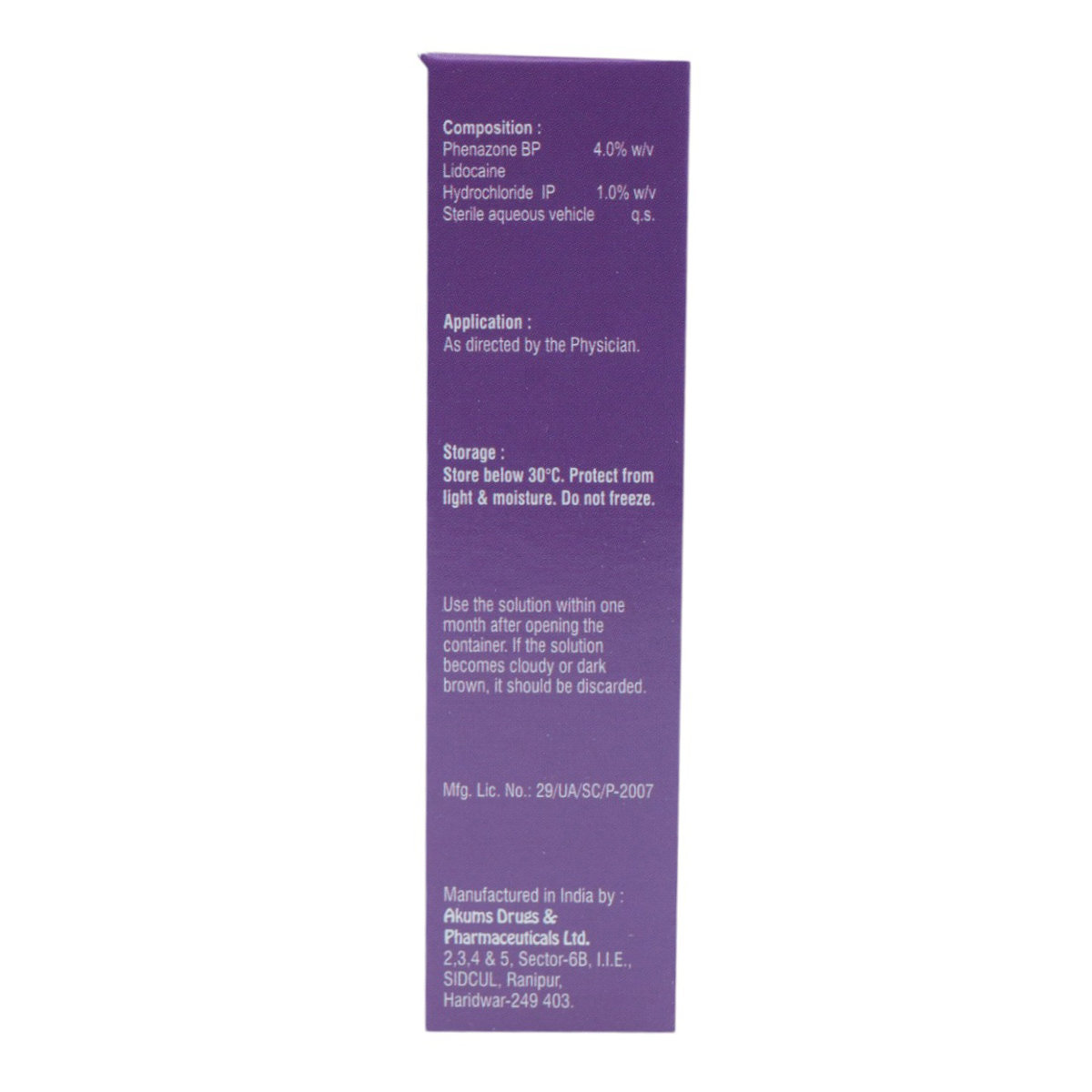
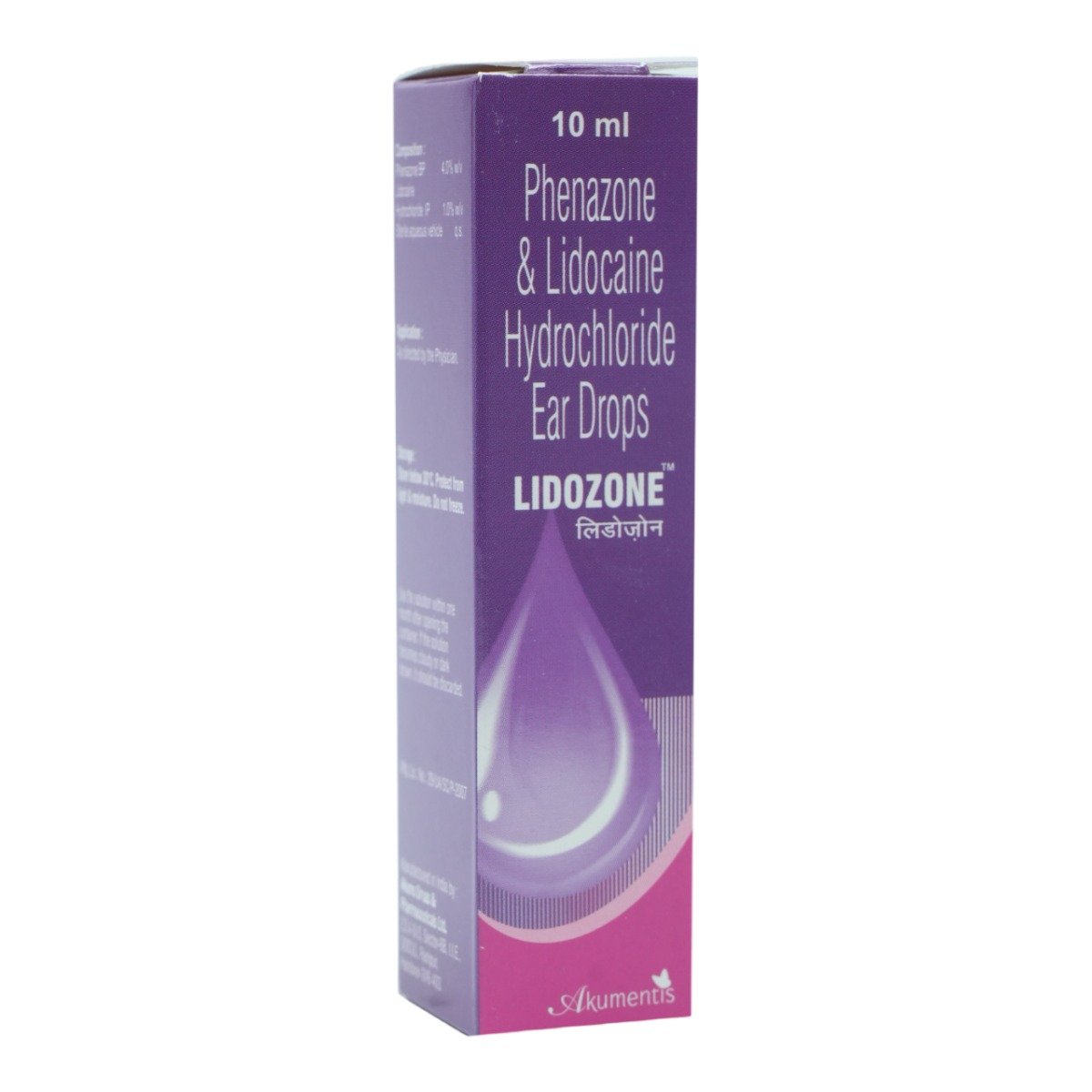
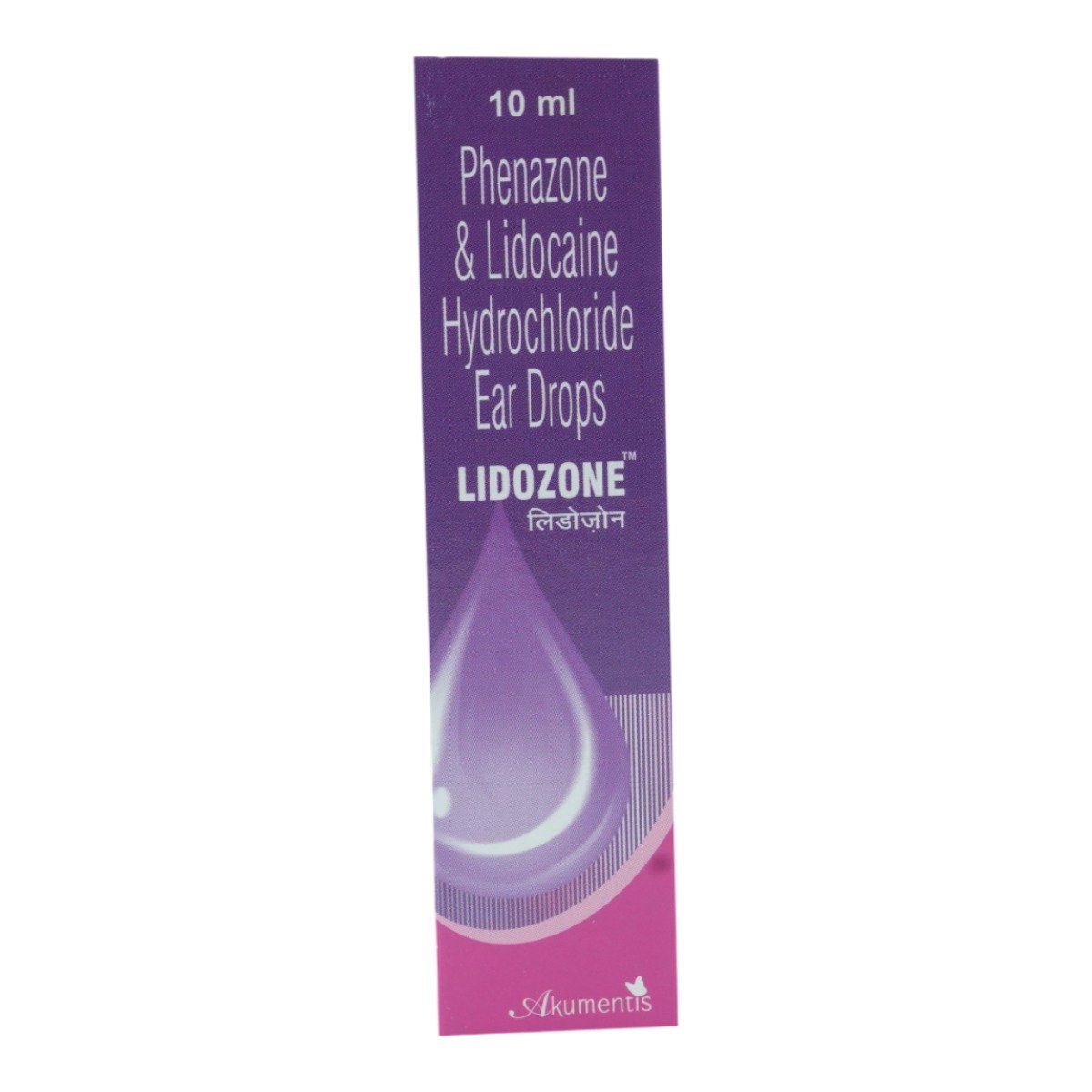
MRP ₹133
(Inclusive of all Taxes)
₹19.9 Cashback (15%)
know your delivery time
Provide Delivery Location
Composition :
Manufacturer/Marketer :
Consume Type :
Expires on or after :
Return Policy :
Selected Pack Size:10 ml
10 ml ₹119.7
(₹11.97 per ml)
In Stock
5ml ₹86
In Stock

Secure Payment

Trusted by 8 Crore Indians

Genuine Products
Therapeutic Class
Country of origin
Manufacturer/Marketer address
Disclaimer
Alcohol
Safe if prescribed
Lidozone Ear Drops may not interact with alcohol.
Pregnancy
Consult your doctor
Lidozone Ear Drops should be used with caution in pregnant women. So, please consult a doctor before using this medicine.
Breast Feeding
Consult your doctor
Lidozone Ear Drops should be used with caution in breastfeeding mothers. So, please consult a doctor before using this medicine.
Driving
Safe if prescribed
Lidozone Ear Drops may not affect your ability to drive.
Liver
Consult your doctor
Lidozone Ear Drops is probably safe when used in patients with liver diseases.
Kidney
Consult your doctor
Lidozone Ear Drops is probably safe when used in patients with kidney diseases.
Children
Safe if prescribed
Lidozone Ear Drops should be used with caution in infants. In children above 1 year of age, it is probably safe when used if prescribed by a child specialist.
About Lidozone Ear Drops
Lidozone Ear Drops belongs to the group of medications called ‘otic agents’ used in the symptomatic treatment of otitis media. Otitis media is the inflammation of the middle ear or middle ear infections. It causes ear pain and fever. It is commonly seen in young children.
Lidozone Ear Drops contains Lidocaine and Phenazone. Lidocaine is a local anesthetic that is used to numb pain. It acts by blocking the pain signals from reaching the brain, thereby decreasing pain. Phenazone is an analgesic (pain killer) and anti-inflammatory agent. It reduces the production of chemical substances that cause pain and inflammation. It also potentiates the action of Lidocaine.
You should use this medicine exactly as prescribed by the doctor. Common side-effects with Lidozone Ear Drops like, local allergic reactions (itching, maculopapular rash), auditory canal hyperaemia (increase of blood flow). However, if you experience any side-effects, inform your doctor immediately.
It is not recommended to use Lidozone Ear Drops if you are allergic to any contents of it. It should not be used in people who have tympanic perforation (perforated or burst eardrum), even if it is due to surgical manipulation. Before using Lidozone Ear Drops, inform your doctor if you are pregnant or breastfeeding. Lidozone Ear Drops should be cautiously used with a doctor's advice in children and elderly people. Lidozone Ear Drops may not interact with alcohol and may not affect your ability to drive; however please seek medical advice.
Uses of Lidozone Ear Drops
Medicinal Benefits Mweb
Key Benefits
Lidozone Ear Drops is used to reduce ear pain and inflammation in patients with middle ear infections. This medicine is used to treat acute otitis media (inflammation of the middle ear), middle ear inflammation due to flu and barotraumatic damage of the middle ear (due to rapid changes in pressure in the ear). It contains Lidocaine and Phenazone. Lidocaine reduces pain, whereas Phenazone helps to reduce inflammation and also increases the effectiveness of lidocaine.
Directions for Use
Side Effects of Lidozone Ear Drops
- Local allergic reactions (itching, maculopapular rash)
- Auditory canal hyperaemia (increase of blood flow)
Drug Warnings
Lidozone Ear Drops should not be used in patients with perforated eardrums, even if it is due to surgical manipulation. Symptoms of a perforated eardrum are ear pain, vertigo, ringing or buzzing sensation in the ear, discharge of fluid or blood from the ear, and sudden hearing loss. Your doctor usually checks if the eardrum is intact before prescribing this medicine. While using Lidozone Ear Drops, inform your doctor if you notice any discharge from the ear and stop the medicine immediately. Before using Lidozone Ear Drops, inform your doctor if you are pregnant or breastfeeding. Lidozone Ear Drops should be cautiously used with a doctor's advice in children and elderly people. Lidozone Ear Drops may not interact with alcohol and may not affect your ability to drive; however, please seek medical advice.
Drug-Drug Interactions
Drug-Drug Interactions
Login/Sign Up
Drug-Food Interactions
Drug-Food Interactions
Login/Sign Up
Drug-Diseases Interactions
Drug-Diseases Interactions
Login/Sign Up
Habit Forming
Special Advise
- Lidozone Ear Drops should be used in the ear only. It should not be used in the eyes or nose.
- Lidozone Ear Drops may cause false-positive results in anti-doping tests, so athletes should use this medicine with caution.
Diet & Lifestyle Advise
- Manage stress, eat healthily, drink plenty of water, exercise regularly and get plenty of sleep.
- Keep your ear clean and dry.
- Avoid getting water in your ears while bathing, showering or swimming while treating an ear infection.
- Quit smoking.
- Infants should be held in an upright angle while bottle feeding as feeding in the horizontal position may cause the milk to flow back into the eustachian tubes.
- Prevent cold as most ear infections in children begin with a cold.
All Substitutes & Brand Comparisons
RX
Out of StockLidopax Ear Drops 5 ml
Brinton Pharmaceuticals Ltd
₹88
(₹15.84/ 1ml)
32% COSTLIERRX
Lidozole Ear Drops 5 ml
Incite Pharmaceuticals
₹92.5
(₹16.66/ 1ml)
39% COSTLIERRX
Otogon Ear Drop 10 ml
Entod Pharmaceuticals Ltd
₹222
(₹19.98/ 1ml)
66% COSTLIER

Have a query?
Buy best Ear, Nose & Oropharynx products by
Entod Pharmaceuticals Ltd
Cipla Ltd
NuLife Pharmaceuticals
Nri Vision Care India Ltd
Lincoln Pharmaceuticals Ltd
Glenmark Pharmaceuticals Ltd
Macleods Pharmaceuticals Ltd
Pristine Pearl Pharma Pvt Ltd
Centaur Pharmaceuticals Pvt Ltd
Dr Reddy's Laboratories Ltd
Lupin Ltd
Zydus Healthcare Ltd
Indoco Remedies Ltd
Intas Pharmaceuticals Ltd
Mankind Pharma Pvt Ltd
GlaxoSmithKline Pharmaceuticals Ltd
Leeford Healthcare Ltd
Megma Healthcare Pvt Ltd
Sapient Laboratories Pvt Ltd
Sun Pharmaceutical Industries Ltd
Zuventus Healthcare Ltd
Zydus Cadila
Auskincare Formualation Pvt Ltd
Alkem Laboratories Ltd
Bell Pharma Pvt Ltd
Chethana Pharmaceuticals
Dwd Pharmaceuticals Ltd
German Remedies Ltd
Kaizen Drugs Pvt Ltd
Torque Pharmaceuticals Pvt Ltd
Vilco Laboratories Pvt Ltd
Avilius Neutracare
Biochem Pharmaceutical Industries Ltd
Blubell Pharma
Delcure Life Sciences Ltd
Eris Life Sciences Ltd
Kavach 9 Pharma & Research Pvt Ltd
Medishri Healthcare Pvt Ltd
NVK Pharma
Optho Remedies Pvt Ltd
Ordain Health Care Global Pvt Ltd
Respionix Healthcare Pvt Ltd
Troikaa Pharmaceuticals Ltd
Xseed Pharma
Abbott India Ltd
Atopic laboratories Pvt Ltd
Cadila Pharmaceuticals Ltd
Clyde Pharmaceutical Pvt Ltd
East India Pharmaceutical Works Ltd
FDC Ltd
Incus Pharmaceuticals Pvt Ltd
Meridian Enterprises Pvt Ltd
Micro Labs Ltd
Morepen Laboratories Ltd
Nextgen Healthcare
Novalab Healthcare Pvt Ltd
Ocuris Pharmaceuticals Pvt Ltd
Precept Pharma
Salvador Visiontech Pvt Ltd
Sunways (India) Pvt Ltd
Timon Pharmaceuticals Pvt Ltd
Unison Pharmaceuticals Pvt Ltd
Aar Ess Remedies Pvt Ltd
Adley Formulations
Ajanta Pharma Ltd
Alercon Pharma Pvt Ltd
Apex Laboratories Pvt Ltd
Aver Pharmaceuticals Pvt Ltd
BMW Pharmaco India Pvt Ltd
Bio Warriors Pharmaceucticals Pvt Ltd
Casca Remedies Pvt Ltd
Elan Pharma India Pvt Ltd
Elivia Life Sciences Pvt Ltd
Elkos Healthcare Pvt Ltd
Floreat Medica Pvt Ltd
Healthgate Pvt Ltd
Ikon Remedies Pvt Ltd
Ipca Laboratories Ltd
Koye Pharmaceuticals Pvt Ltd
Lividus Pharmaceuticals Pvt Ltd
Orn Remedies Pvt Ltd
Rosa Lifesciences
Siloam Pharmaceuticals Pvt Ltd
Sitnez Biocare Pvt Ltd
Srigan Anatto Care Pvt Ltd
Uniza Healthcare Llp
Vatican Life Sciences Pvt Ltd
Welgenic Pharma
Wellok Pharma
West Coast Pharmaceuticals Pvt Ltd
Win Medicare Ltd
Zee Laboratories Ltd
Abyss Pharma Pvt Ltd
Accent Pharmaceuticals & Diagnostics
Alembic Pharmaceuticals Ltd
Alencure Biotech Pvt Ltd
Austere
Bacans Biotech Pvt Ltd
Biopolis Life Sciences Pvt Ltd
Biosys Medisciences


